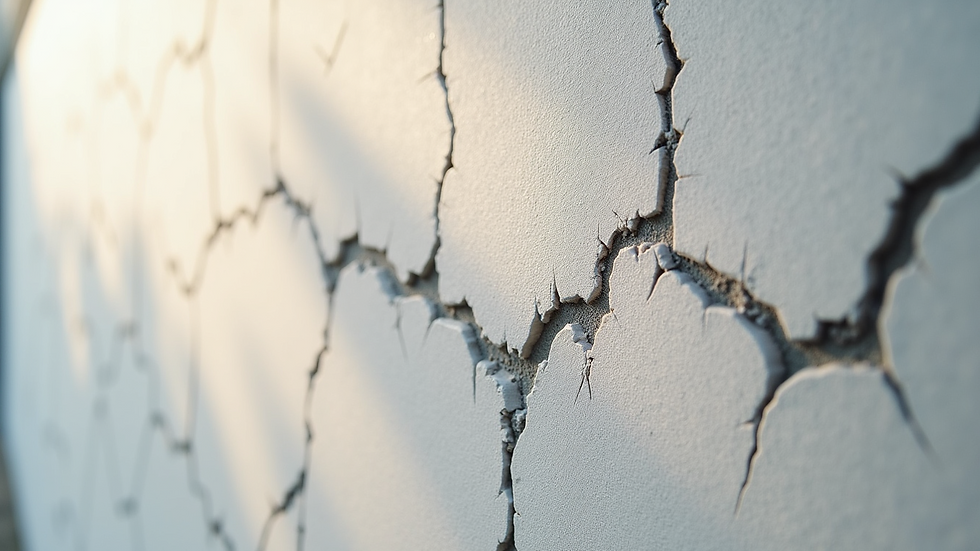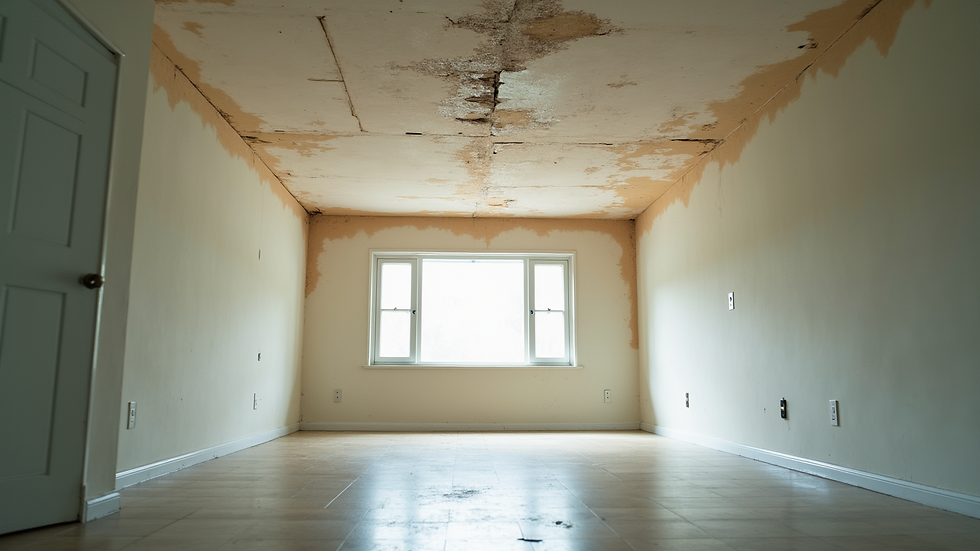Signs Your House Needs Structural Repairs: Essential Tips for Homeowners
- Samuel B.
- Aug 28, 2025
- 4 min read
Updated: Sep 2, 2025
When it comes to ensuring the safety and stability of your house, spotting early signs that structural repairs are needed can save you a lot of time and money. This guide explains common indicators that your home may require structural attention and points to the professional services that can help. If you suspect structural issues, start by checking DBG Contracting’s full list of Services.
Understanding Structural Integrity
Structural integrity refers to how well a building can stand up to its intended load without failing. This includes the foundation, walls, roof, and other vital components. When any part of this system is compromised, it can lead to serious issues, such as safety hazards or a drop in property value. For example, houses with structural problems can see a 10% decrease in valuation, particularly in the resale market.
Common Signs of Structural Issues
1. Cracks in Walls and Ceilings
One of the most visible signs of structural problems is cracks in walls and ceilings. While small hairline cracks can be normal, larger cracks—especially those wider than a quarter inch—may indicate a more serious issue.
What to Look For
Vertical Cracks: Often suggest settling or shifting of the foundation. For instance, vertical cracks over time may widen and indicate underlying foundation problems.
Horizontal Cracks: More concerning; these can suggest lateral soil pressure against foundation walls. If you spot horizontal cracks in a basement or foundation wall, investigate promptly — finishing or repairing basements is a specialty for experienced contractors. See DBG’s Basement services for typical repair and finishing work.
Cracks Around Windows and Doors: Cracks in these areas may signal that the structure is shifting. You may also notice gaps which can become problematic.

2. Uneven Floors
If your floors feel sloped or uneven, this could be a sign of foundation problems. Uneven floors can make your home uncomfortable and lead to further structural damage if not addressed.
What to Look For
Bouncing or Springy Floors: Floors that feel bouncy may indicate that the underlying joists are not adequately supported.
Gaps Between the Floor and Baseboards: This may suggest uneven foundation settling, possibly putting your home at risk of 20% more structural challenges over time if ignored.
3. Doors and Windows That Stick
Doors and windows that are difficult to open or close may indicate the house is settling or shifting. This can stem from foundation issues or changes in the home's framing.
What to Look For
Doors That Won't Latch: Misaligned doors that won’t latch properly could be signs of structural movement. In homes, this can lead to further complications if left unresolved.
Windows That Won't Open: Sticking windows often indicate a shifting frame and could point toward issues with the building's foundation.
4. Water Damage and Mold
Water damage can lead to significant structural issues if not addressed quickly. Mold growth is often a secondary issue from water damage, and both can threaten the integrity of your home.
What to Look For
Water Stains on Walls or Ceilings: Track these to their source — leaking roofs, failed flashing, or plumbing leaks can all cause structural decay. For roofing problems that let water in, consult DBG’s Roofing services.
Mold Growth: If you see mold, it’s essential to address the moisture source and any potential structural damage. Nearly 70% of mold-related cases in homes are tied to unresolved water damage.
Also check gutters, downspouts, and grading — poor exterior drainage can push water into the foundation and cause settling. For exterior cladding and weatherproofing, DBG’s Siding services may be relevant when addressing exterior moisture control.

5. Foundation Issues
The foundation is the most critical part of your home’s structure. Any signs of foundation problems should be taken seriously and addressed immediately.
What to Look For
Cracks in the Foundation: Look for cracks on the foundation exterior wider than a quarter inch. Such cracks often indicate serious underlying issues.
Settling or Sinking: If parts of your foundation appear to be sinking, it may be a sign of a serious problem that could lead to extensive damage if left unaddressed.
Foundation problems can be complex; in many cases, solutions involve waterproofing, underpinning, or targeted repairs often coordinated with basement remodeling or structural reinforcement — see DBG’s Basement services
When to Call a Professional
If you observe any of the signs above—especially horizontal foundation cracks, significant settling, or active water intrusion—call a licensed structural engineer or experienced contractor right away. Early assessment can prevent minor issues from escalating into major, costly repairs.
DBG Contracting offers comprehensive services and can coordinate inspections, structural repairs, and related trades (roofing, siding, basement repair). Start a professional review via DBG’s Request a Quote page.
Choosing the Right Professional
When looking for a professional, consider these factors:
Experience: Focus on candidates with a proven track record specifically in structural repairs.
References: Ask for references or check online reviews to help evaluate their reputation.
Certifications: Verify that they possess the necessary licenses and certifications for structural work.
For repair work that includes structural carpentry, custom supports, or interior rebuilds, you may also want contractors who provide millwork and finish services — DBG’s Millwork team can handle custom repairs and trim work once the structure is stabilized.
Preventative Measures
While it’s vital to address existing structural issues, taking preventative measures helps avoid future problems.
Regular Inspections
Schedule regular inspections of your home, especially if it’s older. Catching potential issues early can save you on average 30% in repair costs over time.
Maintain Gutters and Downspouts
Keep water directed away from the foundation to avoid undermining soils and causing settlement. For exterior improvements that protect the envelope, consider DBG’s Siding or Roofing work.
Landscaping Considerations
Ensure your yard slopes away from your foundation. Landscaping that directs water towards your house can increase the risk of foundation issues by up to 25%.
Safeguarding Your Home’s Future
Recognizing the signs that your house needs structural repairs is the first step toward protecting your investment and your family’s safety. If you notice cracks, uneven floors, sticking doors/windows, water damage, or foundation movement, arrange for a professional inspection as soon as possible. DBG Contracting can assess, plan, and execute the necessary repairs — visit their Services page or Request a Quote to begin.



